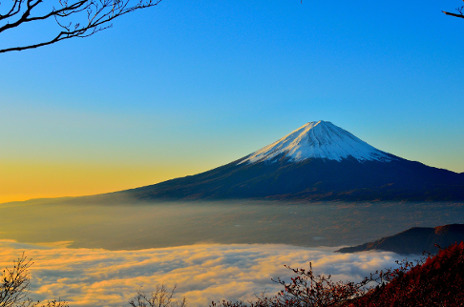
Mt. Fuji - Description: At 3776 meters, Mount Fuji is Japan's tallest and most well-known mountain. It is an active volcano, which most recently erupted in 1708. It stands on the border between Yamanashi and Shizuoka Prefectures and can be seen from Tokyo and Yokohama on clear days.
The Indo-Asia-Pacific region is of immense and growing importance to the world and U.S. interests. For over a century and a half, the U.S. Navy has maintained a presence in the Western Pacific and Indian Oceans to promote peace, regional cooperation and stability. The mission of Ship Repair Facility and Japan Regional Maintenance Center (SRF-JRMC) is to ‘Keep the SEVENTH Fleet Operationally Ready’. Puget Sound Naval Shipyard & IMF Detachment, Yokosuka (PSNS&IMF Det) also supports this vital mission. Timely maintenance of the Forward Deployed Naval Forces (FDNF) in Japan is critical not only to the US-Japan alliance and U.S. interests throughout the Western Pacific and Indian Ocean region, but to the entire Pacific Fleet Area of Responsibility (AOR) that encompasses nearly half of the Earth’s surface.
Serving in Japan is an opportunity of a lifetime. You’ll work in a dynamic, diverse environment that offers some of the Navy's most operationally challenging jobs in ship’s maintenance. As the naval component for U.S. Pacific Command, U.S. Pacific Fleet (PACFLT) leads America's rebalance to the Pacific. PACFLT protects and defends the maritime interests of the United States in the Indo-Asia-Pacific, with SEVENTH Fleet in the vanguard, responsible for the Western Pacific and Indian Oceans. As the U.S. Navy's largest forward deployed fleet, SEVENTH Fleet requires combat-ready ships at all times. SRF-JRMC and PSNS&IMF Det are responsible for maintaining and repairing SEVENTH Fleet’s naval forces to keep them ready to operate forward, ready to fight. We want the best! We need the best to serve on the ‘tip of the spear’. Globalize Your Career!